The grocer will see you now.
This month, some 3,000 Safeway associates working in and around the retailer’s Pleasanton, Calif., headquarters will have the opportunity to hear that invitation when a new state-of-the-art medical clinic opens in an adjacent building, staffed by doctors and other professionally trained practitioners. Here, employees have access to a full range of health care services ranging from simple bloodwork to outpatient procedures. They’ll be able to pick up prescriptions prepared by the pharmacy at a Safeway located three miles away.
Next door to the clinic is the company’s 17,000-square-foot fitness center. A row of elliptical machines and racks of free weights share space with classes devoted to turbo kickboxing, pilates and yoga.
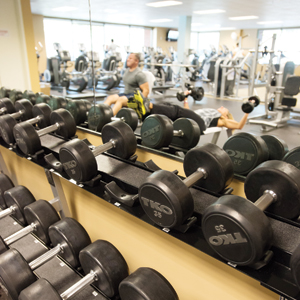 Add a corporate cafeteria that serves organic food and makes its own from-scratch protein energy bar, and the message is clear: Safeway wants you to be healthy.
Add a corporate cafeteria that serves organic food and makes its own from-scratch protein energy bar, and the message is clear: Safeway wants you to be healthy.
“As we looked out at the five- and 10-year horizon, we saw we couldn’t afford to keep taking a ‘business as usual’ approach,” said Larree Renda, Safeway’s executive vice president, and president of Safeway Health, a subsidiary formed in 2009 that markets health care solutions to other corporations. “Something’s got to give, and so we embarked on some pretty big strategies to help us deal with this changing environment.”
With nearly 178,000 employees and 1,700 stores around the United States serving more than a million shoppers, Safeway’s strategies are anything but routine. Indeed, officials have alluded to Q4 plans that they say will change the way shoppers — and the industry — look at supermarkets as providers of wellness services.
For its creative, bold and unprecedented efforts on behalf of its shoppers and employees, Safeway has been named the recipient of the 2012 SN Whole Health Enterprise Award for excellence in health and wellness marketing.
Ingredients for Change
Safeway’s leadership role in the area of wellness can all be traced to 2005. It was an important year for the company. The retailer was embarking on a massive rebranding campaign to present its stores in a different light. Called “Ingredients for Life,” the ambitious theme built on Safeway’s strong points of convenience and freshness. Stores were redesigned with wood accents, friendlier layouts and lighting that emphasized the product.
Running through everything, tying it all together, was a thread of wellness.
“Health and wellness were certainly in our minds at the time,” said Mike Minasi, president of marketing, who helped develop and implement the Ingredients for Life platform. “It was built around the idea that wellness and well-being — people’s health — is certainly contributed to by their diet and what they eat.”
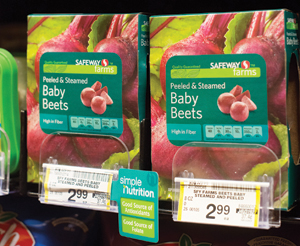 At the same time, the company was making room on the shelf for “O” Organics, the first in a revolutionary lineup of better-for-you private labels. Health and wellness was a profitable, exciting new area that was transforming the supermarket industry. Safeway started with an organic store brand since organic sales were in the double digits, making it one of the highest growth categories in the industry.
At the same time, the company was making room on the shelf for “O” Organics, the first in a revolutionary lineup of better-for-you private labels. Health and wellness was a profitable, exciting new area that was transforming the supermarket industry. Safeway started with an organic store brand since organic sales were in the double digits, making it one of the highest growth categories in the industry.
Yet, the excitement was tempered by the harsh realities of the nation’s health care woes.
“We had costs that were escalating every single year,” recalled Renda. “And as a thin-margin company it was difficult to continue to see these rising costs and know that it would only be a matter of years until we couldn’t afford to give benefits to our employees.”
This “perfect storm” of sorts turned into a watershed of opportunity. CEO Steve Burd — who has emerged as a leading voice on health care reform — steered his executive team toward developing solutions that have steadily deepened the company’s commitment to wellness.
“You could easily say that Steve is a driving influence within our organization on the health and wellness platform,” said Minasi.
For customers shopping in any Safeway store — other banners include Dominick’s, Carrs, Vons, Pavilions and Randalls — the results of the company’s efforts are plain to see. Most notable is Safeway’s investment in better-for-you private label products. Unlike other chains that have one or two lines designed for wellness shoppers, Safeway has five distinct. They’re part of the Health/Wellness segment of the retailer’s three-part portfolio of store brands, sold alongside products slotted into the Core and Premium segments.
“One of the things our consumer insight work told us years ago is that health and wellness would be an important issue for our shoppers that persisted into the future, and wouldn’t behave like some of the more fad-oriented trends,” said Minasi.
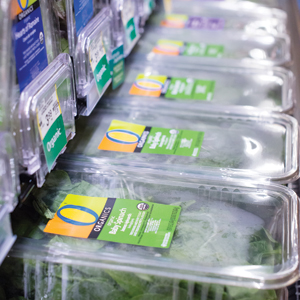 The SKUs have proliferated since 2005. What started with a few dozen “O” Organics items has since grown to include more than 1,300 products, some focusing on the baby and toddler subcategories; Eating Right, a 300-item line of nutritionally enhanced products that uses a special on-pack icon system to highlight desired nutrients; Open Nature, consisting of more than 100 all-natural products that extend to meat and poultry; Bright Green, a 50-item store brand devoted to home care products; and In-Kind, a line of skin and beauty products made with at least 90% all-natural ingredients such as coconut oil and grapefruit extracts.
The SKUs have proliferated since 2005. What started with a few dozen “O” Organics items has since grown to include more than 1,300 products, some focusing on the baby and toddler subcategories; Eating Right, a 300-item line of nutritionally enhanced products that uses a special on-pack icon system to highlight desired nutrients; Open Nature, consisting of more than 100 all-natural products that extend to meat and poultry; Bright Green, a 50-item store brand devoted to home care products; and In-Kind, a line of skin and beauty products made with at least 90% all-natural ingredients such as coconut oil and grapefruit extracts.
Safeway invests such a tremendous amount of time and energy in its healthy store brands because the company’s internal research points it in that direction, according to Minasi.
“We are working all ends of the value spectrum, doing all sorts of market research and focus groups, and quantitative/qualitative research to understand how the things we are doing resonate with our shoppers,” he said. “We do everything we can to understand what shoppers need and to remain as relevant as we can be.”
Pursuing “best in class” store-brand development involves both internal staff members and external partnerships, not unlike the approach taken by any CPG company, said Minasi.
“It also means spending an awful lot of time on the up-front issues of trend recognition and pure insights work that we believe is necessary to understand shopper behavior more deeply,” he added.
Also in SN Whole Health's Fall 2012 Issue:
• Record Catch for Sustainable Seafood
• Integrating Gluten-Free
• Organic at 10
The retailer recently shifted product development slightly more in-house with the opening of a culinary center on the corporate campus.
The kitchens, which opened last year, “instill more of a food culture” in the organization. Here, chefs, nutritionists and other professionals develop recipes and test ideas for the company’s next private-label line, among other things.
“What we found from customers is that they love that Safeway is behind the product,” said Minasi.
Wellness Made Simple
In 2011, Safeway updated the way it presents nutrition information to customers. SimpleNutrition is an on-shelf and occasional in-ad program that identifies nearly two dozen nutritional or ingredient benefits, covering a broad scope of needs, ranging from organic and gluten-free to “Good Source of Folate” and “Lean Protein.”
The system doesn’t rate nutritional content like the Guiding Stars and NuVal systems that have become popular throughout the industry, though the process of determining which attributes are assigned to products using established scientific guidelines. Safeway bases its criteria on the input of its own nutritionists and outside experts who use recommendations provided by the Food and Drug Administration, the U.S. Department of Agriculture, academia and food industry organizations.
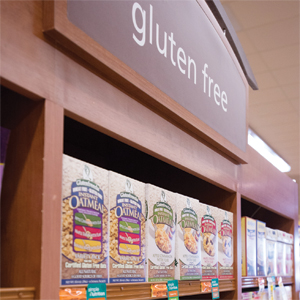 “We maintain a database of the nutritional content of all the things we sell, and that allows us to provide our customers with that information through SimpleNutrition,” said Minasi.
“We maintain a database of the nutritional content of all the things we sell, and that allows us to provide our customers with that information through SimpleNutrition,” said Minasi.
“We try not to make the decision on what’s good and what’s not good. We want to provide [shoppers] with enough information so they can make the choice on what’s right for their lifestyle,” he added.
Though SimpleNutrition is a very basic program, it gives Safeway plenty of room in which to build a more sophisticated offering. The retailer had earlier tried out a nutrition guidance program, called FoodFlex, but it was complicated and participation wasn’t meeting expectations, according to industry observers. At the same time, new insights into health and wellness allowed Safeway to think ahead and plan a more efficient, effective way to present nutrition data.
“We’re taking some of the FoodFlex capabilities and we’re integrating them with the SimpleNutrition information,” said Minasi. “That will provide a web environment with a bit more utility than either FoodFlex had, or what SimpleNutrition has today.”
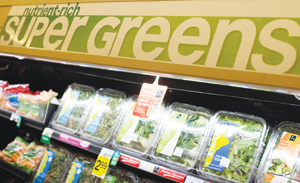 Another potential vehicle for promoting health and wellness comes from Safeway’s brand new Just for U program. Rolling out the personalized digital coupon initiative has been a priority for the retailer, and just about all stores in the United States are able to participate.
Another potential vehicle for promoting health and wellness comes from Safeway’s brand new Just for U program. Rolling out the personalized digital coupon initiative has been a priority for the retailer, and just about all stores in the United States are able to participate.
“We’ve had strong customer acceptance and are meeting our sign-up and adoption expectations, and are seeing good use of the program,” said Minasi of early feedback.
At its most basic, Just for U is an incentive that combines convenience and discounts tailored to specific shoppers. Advances in the way retailers can parse loyalty card data — as well as technology itself — are making it possible for Safeway and others to communicate with individual classes of shoppers, including those buying wellness products.
“The idea of personalization is something shoppers are looking for,” said Minasi. “In that kind of environment, you could think about extending that to every aspect of our business.”
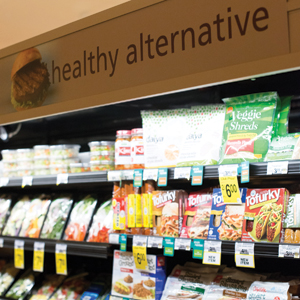 The personal touch comes in more traditional forms, too. Safeway employees blog regularly about their areas of expertise. They interact with customers and answer their questions. Kerry, a registered dietitian who works in corporate communications, writes about healthful snacks and ways to lose weight; Nancy, vice president of innovation in the consumer brands division, informs readers about the retailer’s health and wellness private labels; and floral department veteran Amy reports on the company’s sustainability efforts. Each one is part of a larger group of correspondents that help Safeway communicate directly with shoppers.
The personal touch comes in more traditional forms, too. Safeway employees blog regularly about their areas of expertise. They interact with customers and answer their questions. Kerry, a registered dietitian who works in corporate communications, writes about healthful snacks and ways to lose weight; Nancy, vice president of innovation in the consumer brands division, informs readers about the retailer’s health and wellness private labels; and floral department veteran Amy reports on the company’s sustainability efforts. Each one is part of a larger group of correspondents that help Safeway communicate directly with shoppers.
Likewise, Safeway itself gets behind a variety of causes, many of which incorporate a healthy activity. For example, recent events in which employees were asked to sign up for and participate in ranged from a walk/run benefiting lung cancer research to a 2-mile walk promoting organ donation. Both were partially sponsored by the Safeway Foundation, the company’s non-profit philanthropic arm.
The foundation gets additional support from another industry first credited to the company: a chief medical officer. Dr. Kent Bradley was hired by Safeway last September to oversee and coordinate all health and wellness programs, including its employee and consumer wellness and prevention activities. He also represents the company in community outreach projects administered by the foundation.
“Safeway has always been a leader in health initiatives,” Bradley said in an earlier WH interview. “We have a strong commitment to, and a culture of, health.”
Shaping Up
A company is only as good as its employees, and no one understands the maxim better than Renda, the executive vice president who oversees human resources.
“We believe that everyone wants to enjoy good health. As an employer, we want to help people with what their needs are,” she said.
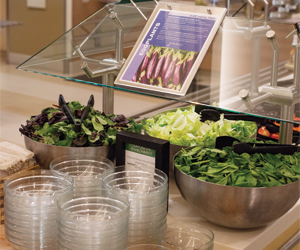 Yet, in this age of accountability, the retailer has come to expect its employees to meet certain minimum health standards. What started as a cost crisis a decade ago has evolved into a corporate culture of health and wellness.
Yet, in this age of accountability, the retailer has come to expect its employees to meet certain minimum health standards. What started as a cost crisis a decade ago has evolved into a corporate culture of health and wellness.
“We have to be in the Guinness Book of World Records for how fast we launched our Lifestyle stores and how dramatically we changed health care,” said Renda.
Prior to the changes, Safeway was like any other company in that it faced enormous costs associated with its health care responsibilities. Benefits were the second-largest expenditure after direct wages, with one-third of everyone’s pay going to cover them. The annual bill was coming in right around a billion dollars.
Finding a solution to the dilemma became a priority of CEO Burd. Renda says that nothing compares to a buy-in from the very top of an organization.
“If you don’t have the CEO and top leadership engaged, you are not going to get the results you want, in the time that you need them,” she said.
With Burd’s approval, executives crafted a system that scaled premiums to the health condition of the person covered. The healthier a person is, the fewer benefits they would likely require. The thinking went that someone who’s healthy and follows an active lifestyle should not have to bear the burden of paying for someone who is obese, or smokes, and does nothing about it.
“We do that under the idea that behavior matters,” Renda said.
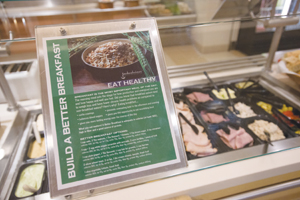 The centerpiece of this approach is Healthy Measures, a biometric testing program that records and monitors five health parameters: obesity, smoking, blood pressure, cholesterol and glucose.
The centerpiece of this approach is Healthy Measures, a biometric testing program that records and monitors five health parameters: obesity, smoking, blood pressure, cholesterol and glucose.
Health Measures is entirely voluntary and reserved for “back stage,” non-union employees. An employee who tests negative on all five exams can find his or her premiums lowered by as much as 20% a year. With that kind of potential savings, it’s no surprise then that 80% of employees and 60% of spouses get the screenings, said Renda.
That, in turn, has lowered Safeway’s overall healthcare costs, which came in last year at $850 million.
“Biometric testing isn’t just a convenience or a ‘nice to know,’” said Renda. “We actually have skin in the game for employees with the outcome of those results.”
Employees who don’t pass the screenings are still eligible for retroactive savings the following year if they show improvement in their condition.
“If there is a reduction, you get all the money you paid in previously back,” Renda said. “There’s always the carrot dangling as an incentive for you to try to do something about it.”
Wellness goals are reinforced by another program, called Jump Start. Built off of a template into something uniquely Safeway, this year-long, companywide wellness initiative for individuals or teams allows them to compete against one another, or pits the athletic prowess of one store against a crosstown rival.
The current effort began on July 30 and runs through May 31, 2013. During this time, participants are invited to set fitness goals, track progress, utilize educational and motivational tools to maintain a positive outlook, and join in on company challenges, which are designed to be accessible to all levels of fitness: Past competitions have involved hula hoops, ping pong, meditation and games of Simon Says.
“It doesn’t have to be doing crunches or lifting weights,” Renda said. “The philosophy is that there’s something for everyone.”
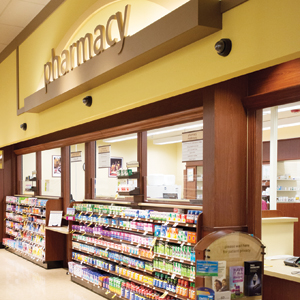 A similar line of thinking dominates the business side, as well. The retailer opened Safeway Health in 2009. The subsidiary was created to help other organizations control health care costs using some of the innovative approaches developed by the retailer.
A similar line of thinking dominates the business side, as well. The retailer opened Safeway Health in 2009. The subsidiary was created to help other organizations control health care costs using some of the innovative approaches developed by the retailer.
“I see Safeway as the beta site for Safeway Health,” said Renda. “The things we do here that work really well, we perfect them, and those programs come out bug-free and are rolled out to other clients.”
Most in demand by companies working with Safeway Health are the application of the biometric evaluation system, along with a pharmacy transparency tool that works on drug switching of therapeutic equivalents — not generics. Renda estimates the latter program can save employers 15% to 20% off total drug costs.
There’s been some buzz in the industry that Safeway would, at some point, bring the benefits of its corporate experience directly to consumers. CEO Burd recently described a “wellness play” the company has been developing with a partner that possesses an “innovative” technology.
Read more: SN Whole Health: Fall 2012 News
“We plan to initiate launch in one major market in the fourth quarter,” he told investors at a Goldman Sachs retail conference earlier this month. “We expect to have this rolled out to our U.S. operations by the end of 2013.”
Burd said the plan will generate good margin and income, and “should attract more people to our stores.”
Read more: SN Whole Health: Fall 2012 Trends
Renda would sketch only in broad strokes.
“There will be a number of wellness services that drug stores, supermarkets — all the places where there’s a lot of consumer traffic — are going to have to offer,” she said. “And Safeway intends to be a leader in that area.”
Sidebar: Green Efforts
Safeway’s commitment to sustainability goes deep into the supply chain, according to Tom Nartker, vice president of transportation, whose responsibility it is to develop better ways of getting products into stores.
“Our mantra has been to drive towards zero waste, whether it be at the plants or the DCs,” he said.
Among the eco-friendly highlights the retailer recorded in 2011:
• Eight of 31 manufacturing plants reached “zero waste” levels, meaning that they recycled better than 90% of waste generated.
• Distribution centers sent 25% less garbage tonnage to landfills.
• The manufacturing/distribution divisions recycled 491,000 tons of material, including 284,000 tons of cardboard, 8,200 tons of plastic film, 17,800 tons of waste meat and grease, 80,000 tons of compost and 26,000 tons (mostly bread) sent to animal feed makers.
• Total kilowatt usage throughout supply operations was reduced by 6%, saving more than 19.8 million kilowatt hours.
• Two wind turbines were installed at the company’s largest DC in Tracy, Calif., that together generate 65% of the facility’s power needs.
Also in SN Whole Health's Fall 2012 Issue:
• Record Catch for Sustainable Seafood
• Integrating Gluten-Free
• Organic at 10
Safeway at a Glance
Headquarters: Pleasanton, Calif.
Ownership: public (NYSE: SWY)
2011 sales: $43 billion
Year founded: 1915
Number of stores: 1,666
Market areas: West Coast, Denver, Phoenix, Texas, Chicago, Mid-Atlantic
Banners: Safeway, Vons/Pavilions, Dominick’s, Safeway/Carrs, Randalls/Tom Thumb
Number of employees: 178,000
Also in SN Whole Health's Fall 2012 Issue:
• Record Catch for Sustainable Seafood
• Integrating Gluten-Free
• Organic at 10
| Suggested Categories | More from Supermarketnews |
 |
|

|
|



